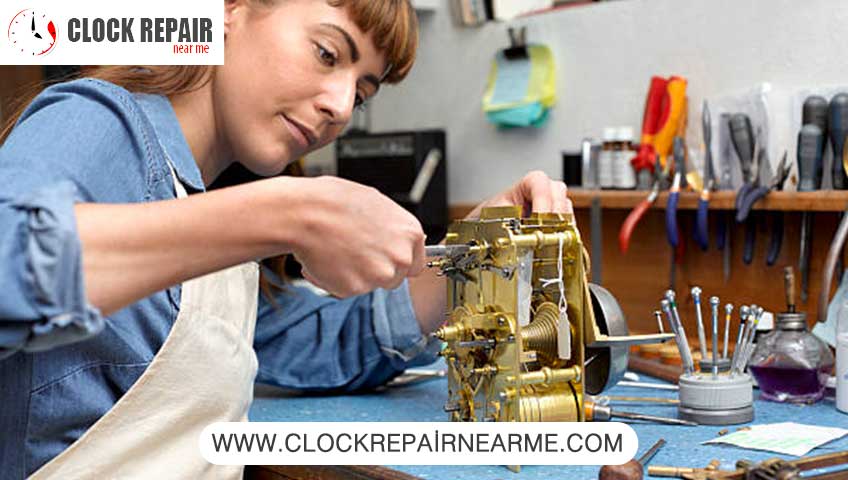Restoring an Interclock grandfather clock involves careful attention to detail and a step-by-step approach. Below is a general guide to help you with the restoration process. Keep in mind that the specific steps may vary depending on the model, age, and condition of the clock:
Examine the grandfather clock thoroughly to identify areas that need restoration. Take note of any missing or damaged parts, signs of wear, and the overall condition of the clock.
Document the clock’s original features and design. Take photographs from multiple angles, and note any unique or intricate details that might be essential during the restoration.
Carefully disassemble the grandfather clock. Remove the clock movement, weights, pendulum, and any decorative elements. Keep track of each part to ensure proper reassembly.
Clean each component of the grandfather clock, including the movement, gears, and other parts. Use a gentle solution and soft brushes to remove dust, grime, and old lubricants. Avoid using harsh chemicals that may damage delicate components.
Address any damage or wear identified during the assessment. This may involve repairing or replacing damaged gears, fixing broken or missing parts, and reinforcing any weakened structures.
If the clock has a wooden case, assess the condition of the wood. Repair any cracks, chips, or scratches. Refinish or restore the wood to match the original appearance.
Disassemble the clock movement and inspect each gear and component. Clean, lubricate, and make any necessary adjustments to ensure smooth operation. Replace worn bushings or pivots as needed.
- Methodically reassemble the grandfather clock, following the reverse order of disassembly. Ensure that each part is in its correct position, and pay attention to proper alignment.
Once reassembled, test the grandfather clock to ensure that it keeps accurate time, the chimes or striking mechanisms work correctly, and any other features function as intended.
Fine-tune the clock as needed, adjusting the pendulum length for accurate timekeeping and regulating the chimes or striking mechanisms if necessary.
Replace any decorative elements or ornaments that were removed during the restoration. Ensure that the clock looks aesthetically pleasing and matches its original design.
Keep detailed records of the restoration process, including any replacement parts, adjustments made, and the overall condition before and after restoration.
If you’re unsure about certain aspects of the restoration, or if the clock is valuable or antique, consider seeking professional assistance from a clockmaker or restoration specialist.
Restoring an Interclock grandfather clock requires patience, precision, and a respect for the craftsmanship of the original piece. If you’re unfamiliar with clock restoration, consulting with an experienced professional can be beneficial, especially for valuable or historically significant clocks.





